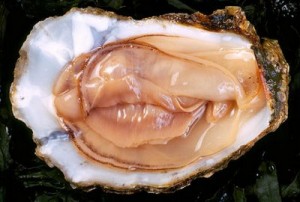Rob Mancini writes:
My wife and I decided to visit France and spend some time with her lovely relatives. We were treated like gold, they really like Canadians. The scenery, the wine, cheese and the company was unsurpassed. As a treat one evening we caught some fresh oysters, shucked them, and ate them with a dash of lemon juice. This was followed with some great beer and local wine. I have  never been a fan of oysters because of the slimy texture and the risk of Vibrio spp. but had to try it and none of us became ill. A couple vacationing in Panama City wasn’t as lucky. The Huffington Post reports :
never been a fan of oysters because of the slimy texture and the risk of Vibrio spp. but had to try it and none of us became ill. A couple vacationing in Panama City wasn’t as lucky. The Huffington Post reports :
Forty-year-old Darrell Dishon wasn’t an oyster fan. Before June of 2009, he’d never even tried one. So when his wife Nicole proposed splitting a dozen raw shellfish at a restaurant in Panama City, Fla., where the two were vacationing, he was leery.
Nicole remembers eating 10. She says Darrell ate two.
The doctors delivered the awful news that he had contracted a form of vibriosis, one of the most deadly foodborne illnesses in the world. Over the following weeks, Darrell’s health continued to decline. He developed life-threatening septicemia. His doctors amputated both his legs above the knee in an effort to stop the spread. In December, Darrell Dishon became one of the approximately 15 people each year who succumb to vibriosis after eating raw oysters. Vibriosis is an incredibly rare disease — but Centers for Disease Control and Prevention data show that it’s getting more common.
“While all the other pathogens have shown a nice decline, the vibrios are about twice what it was since 1998. In a little over a decade, incidence has doubled. They’re still relatively small numbers — but it’s a very striking increase,” leading vibrio researcher Glenn Morris of the University of Florida’s Emerging Pathogens Institute told The Huffington Post.
Vibrio thrive in warm water. One widely publicized study published in July 2012 indicated that a 1-degree increase in the temperature of a body of water triples its vibrio population. For that reason, many scientists believe that climate change has contributed to the recent rise in vibriosis, and that it could make vibrio bacteria much more prevalent in coming years.
The culprit was Vibrio vulnificans, a bacterium in the same family as those that cause cholera. The bacterium causes fever, diarrhea, abdominal cramps, nausea, and vomiting, and often death. Cook shellfish thoroughly (63°C; 145°F) to avoid infection.
